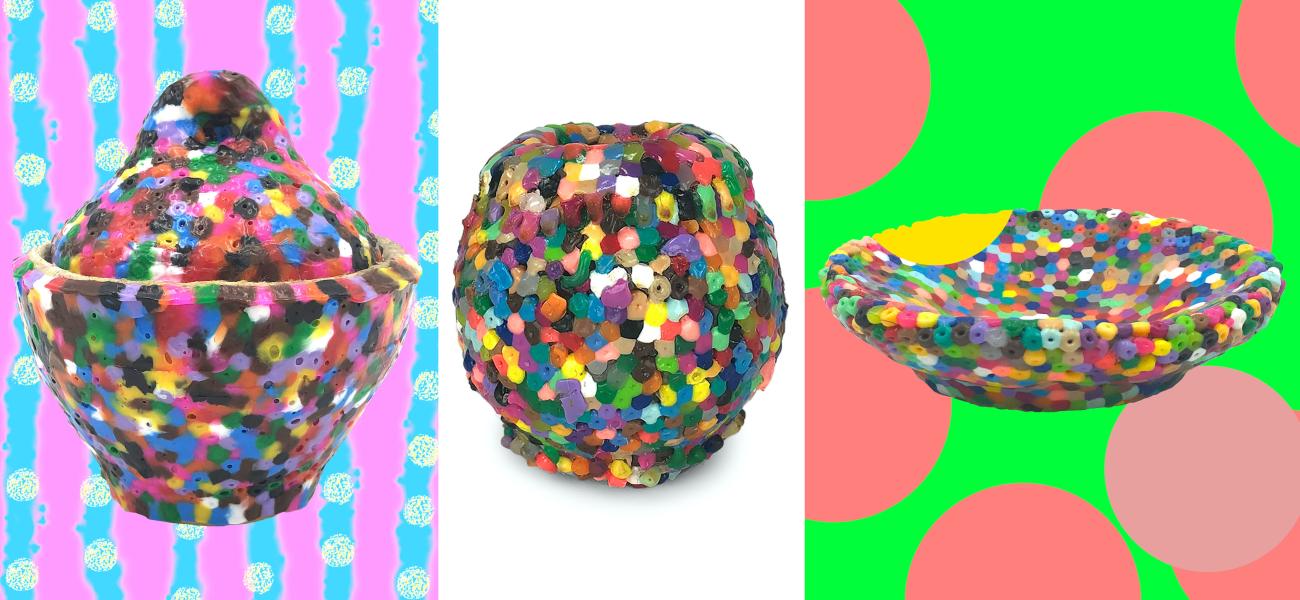 What if I approached the tradition of function with polychromatic humor and a childlike curiosity about materials?
What if I approached the tradition of function with polychromatic humor and a childlike curiosity about materials?
It is vital in my practice – this full embrace of freedom. Conversely, guiding parameters allow me to pursue my artistic ideals with joy and clarity. An artistic practice is, after all, just an invented structure of rules and boundaries within which an artist explores – a delicate balance of freedom and focus, a combination of research, making, and reflection. I believe these elements result in objects that are informed, relevant, and personally significant. Employing this system, I found unfettered freedom in my own practice. The question of material is wide open, defined only by saturated color and childhood nostalgia. Tempered by rules of function, I approach the nature of objecthood from a focused but alternative perspective. My practice now consists of two overarching elements: ideation and action or, more simply put, the brain and the hands. Although my research is informed by countless subjects, the one aspect I will focus on here is my inspiration from the Mingei tradition, specifically in reference to use, freedom, and nondualism.
The Mingei Movement is inextricably tied to the teachings of Buddhism and can be characterized by its focus on the importance of folk crafts. Mingei philosophies detail the importance of objects in terms of use, beauty, character, quantity, price, aesthetic, and sometimes anonymity of the maker. Often seen as a response to rapid Japanese industrialization, the Mingei Movement was founded in the early twentieth century by Buddhist philosopher and art critic Yanagi Soetsu.[1]
Because I translate Mingei teaching through a contemporary American lens, the final product can seem far removed. People are often surprised when I tell them how greatly the Mingei Movement influences my practice. To a certain degree, I understand the confusion. Mingei pottery frequently features neutral colors and traditional materials, while I employ bright colors and modern materials. Many American potters are dedicated to the Mingei ideals of quantity, aesthetic, and price. In contrast, the philosophies that inspire me most are those concerning beauty, character, and use, manifesting in a body of work rooted in the concepts of function, irregularity, and exploration.


